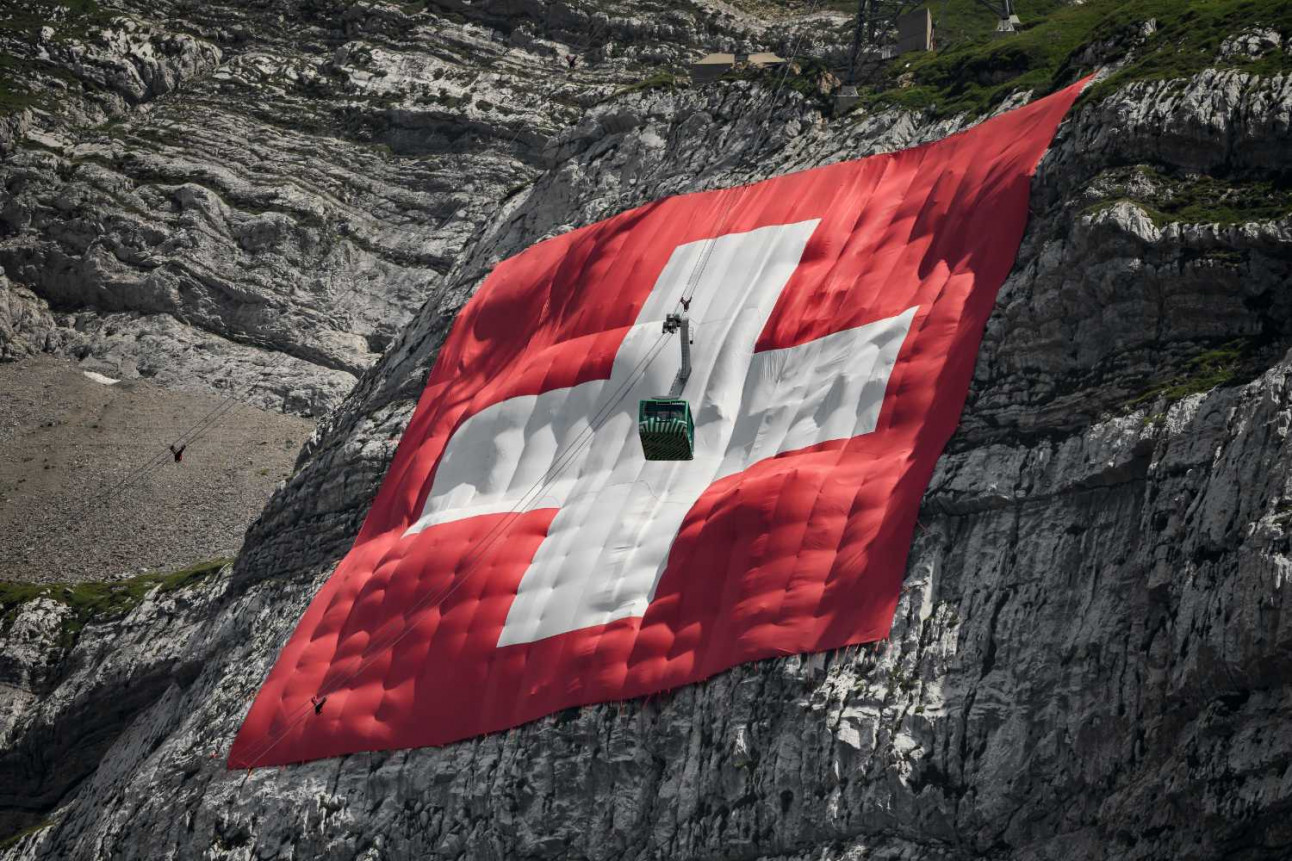A new ‘national anthem’
Saturday, August 1st was the first Swiss National Day to be celebrated with Switzerland’s new English-language ‘national anthem’.
The anthem was selected by a jury and a public vote, while the writer took home CHF10,000 for penning the new anthem.
The eventual winner, Swiss artist Werner Widmer, donated the prize money to a social organisation.
Widmer's entry, entitled ‘White Cross on a Shining Red', was chosen as it was able to “focus the essential values of the constitutional preamble in a single song verse”.
Although the anthem has not replaced the official Swiss anthem, Lukas Niederberger, the Director of the Swiss Society for the Common Good who conducted the competition, told The Local he hoped it would follow the path of the German version of the anthem – White Cross on a Red Ground.
EXCLUSIVE INTERVIEW: ‘Freedom, independence, equality': Switzerland chooses new English-language ‘national anthem'

What are the advantages of living in Switzerland? Well, the flag's a big plus. Photo: Fabrice Coffrini
Unmarried partners again allowed into Switzerland
Swiss authorities have lifted restrictions on entry to people from third nations whose ‘significant other half’ lives in Switzerland.
At a press conference on Thursday, July 30th, State Secretariat for Migration (SEM) representative Barbara Büschi said unmarried couples will again be able to reunite in Switzerland from Monday, August 3rd.
In order to enter, couples will be subject to strict rules and will need to prove the existence of their relationship to authorities.
They will also require an invitation to enter. The invitation must be in writing and come from the member of the couple living in Switzerland.
People from all countries will be allowed to enter, however anyone entering from 'high risk' countries will need to comply with Switzerland's quarantine requirement.
READ: Everything you need to know about Switzerland's new quarantine requirement
In order to enter, travellers must prove to authorities that the relationship has been ongoing for 'a long time'.
“A short vacation friendship is not enough” said Büschi.
Letters, photos, plane tickets and stamps in passports can all be used to prove the legitimacy and the length of the relationship.
Masks compulsory in schools in Neuchâtel
As of August, masks have been made compulsory in high schools and vocational education centres in the western canton of Neuchâtel.
State Councilor Monika Maire-Hefti told Le Temps “”Wearing a mask will be compulsory in post-compulsory education, if one cannot respect 1.5 meters of distance”.
In practice, Le Temps reports that masks are likely to be compulsory inside all high schools and vocational centres as distance requirements will be difficult to comply with.
Masks will not compulsory outside, while Maire-Hefti also said “”in some workshops that are large enough, however, the students should not wear them.”
The canton has ordered 120,000 masks for students to wear in order to comply with the requirement.
Neuchâtel has followed the lead of Lucerne and Geneva in requiring masks in schools, although unlike Lucerne students do not have to pay for their own masks.
What else could change? Circle August 12 on your calendar
Amid rising infection rates across the country – particularly in Geneva – the federal government is considering implementing further restrictions, most notably acting on a recommendation of the Board of Directors of the Health Directors' Conference (GDK) to make masks in shops compulsory in all cantons.
‘Officially a high-risk area': How Geneva became Switzerland's new coronavirus hotspot
This meeting will take place on August 12th.
While some cantons – Geneva, Jura and Vaud – already have compulsory masks in shops, the result of the meeting could be a nationwide requirement.

An accurate representation of the rising infection rates in Geneva. Photo: Fabrice Coffrini
Spain remains a pain: Could quarantine be on the way?
On Monday, August 3rd, Spain’s infection rate rose above the threshold of 60 new infections per 100,000 people – meaning that the Iberian country could be added to the list for countries that are required to quarantine on arrival in Switzerland.
The Local spoke with a representative from the Federal Office of Public Health on Tuesday, August 4th who said officials “are constantly monitoring the development of the situation in Spain” but that as it stands “Spain is not on the list” of high-risk countries.
As we covered in early August, expect an announcement of a quarantine requirement if infection rates remain high in Spain.
Revision of the Family Allowances Act
The revision of the Family Allowances Act (FamZG) came into force on 1 August 2020 in force.
The FamZG is amended in three areas: 1. the age limit for training allowances is lowered.
2. unemployed mothers receiving maternity allowance, are entitled to family allowances.
3. a legal basis for financial assistance to family organisations is created.
More information can be found here.



 Please whitelist us to continue reading.
Please whitelist us to continue reading.
Member comments